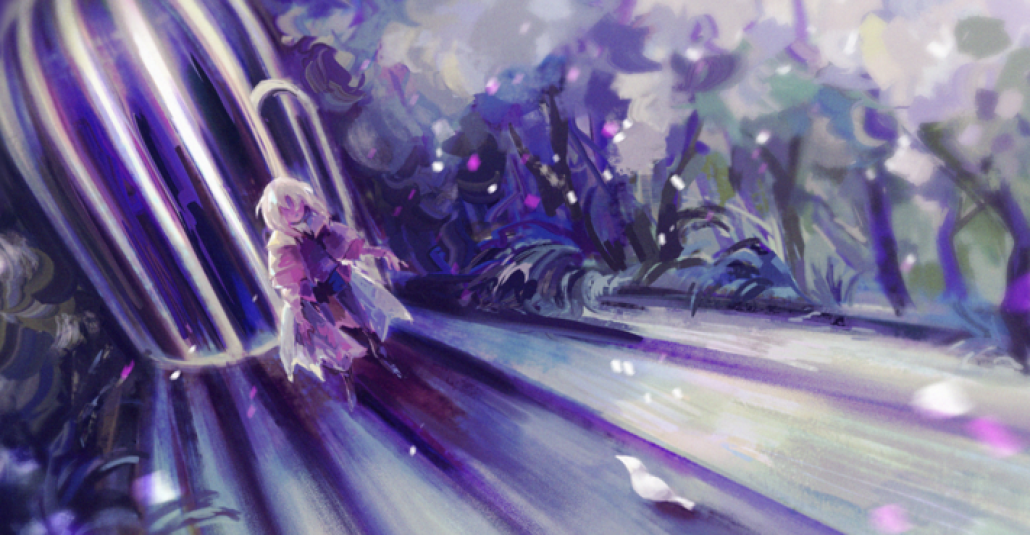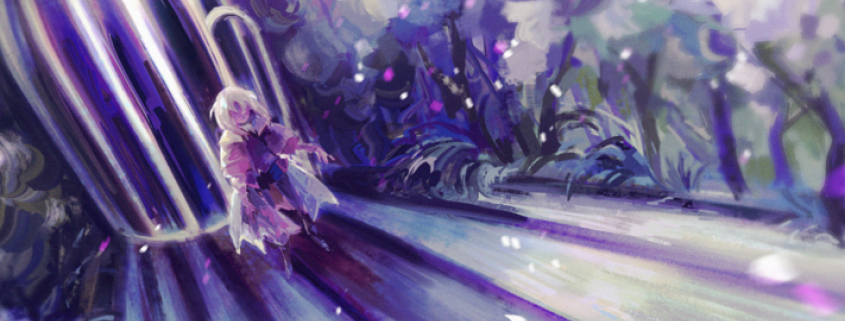‘STARWEAVE’ rejects roles in role playing games

Since the emergence of the hero saving the damsel in 1981’s “Donkey Kong”, video games have cultivated archetypal roles as a staple in gaming genres by giving characters a sole purpose, negligent of consciousness outside their programmed code. Even several decades after, Mario’s continuous pursuit to save Princess Peach still echoes how games romanticize traditional roles.
This is undoubtedly represented in role-playing game titles such as “Fire Emblem,” a game that features roles like damage dealer and healer that subject characters into roles both literally and figuratively, putting the “role” in role-playing games.
Unlike films, where actors have more freedom to express their character’s moral compass, the nature of role-playing video games is filled with constraints when it comes to diversity and replaces human ambiguity for programmed dialogue.
However, in creative director Rachel Geng’s “STARWEAVE,” a MFA thesis project created by the third-year master’s student in interactive media, this concept of roles in video games was a perfect way for her to explore what happens when characters don’t fit into their imposed societal rules.
“The theme is a story about constricting roles and the cycle of oppression. The characters take on roles that they don’t want, that they don’t feel like they belong in but they’re forced to play out those roles,” said Ashley Kim, a senior majoring in theater and the executive producer of “STARWEAVE.” “In the end [the characters] have to make a decision of ‘Am I just going to just go with this role that’s been forced upon me’ or ‘Am I going to do what I want to do, whether or not society likes it.’”
Consisting of a development team of 50 artists and engineers from in and outside USC, “STARWEAVE”’ is a hybrid 2D and 3D narrative role-playing game geared towards LGBTQIA+ community members in which a group of teenagers are transported into a dream world known as “Lucid” to fight demons attempting to bring chaos into the real world.
The game is set to be available on Steam after the USC Games Expo on May 10, an annual one- to two-day convention that showcases all the student games from this academic school year. In “STARWEAVE,” the player plays as the leader of the group, “Dreamer,” and is tasked with learning how to interact with the diverse members of her team to work together as a surrogate family.
The highlight of this adventure is that the characters undergo personal journeys and encourage the player to learn the psyche of each character as they bond with them in this three hour long experience.
One of the ways that Geng was able to challenge the player in learning the personalities of each character is by implementing a mechanic known as “Refusal,” giving her characters free will through artificial intelligence coding, to decide whether or not to follow the players directions according to what they would actually do.
By allowing the characters to either accept or reject the orders from “Dreamer,” “STARWEAVE” becomes one of few games that allow fictional characters to supersede player’s instructions and requires players to act based on what that character would do if it could respond.
“I definitely think it was just a really cool technical thing to work. When Rachel pitched it to me, I was like, ‘Wow, that sounds horrible from a programming perspective. Let’s try it,’” said Sammy Chuang, a master’s student studying fine arts. “The ‘Refusal’ is just so unique and special in terms of the mechanics. I think there’s so much to this game because from a mechanical perspective, the combat is super cool.”
As a narrative-centric game, the Refusal was important to the main theme of teamwork and plays an integral part in relaying this message to the player as they move forward.
“Our narrative goal for this was to create an environment in which everything was pointing back to the battles, where everything was about understanding each character’s psyche, both personally and in battle, seeing how those things connect so you can respond to it in our strategy gameplay,” said Gale Sullivan, a senior majoring in interactive entertainment and the narrative lead.
Outside of the difficulty in learning the inner mind of all four characters, “STARWEAVE” weaved in conversations on the concept of role-playing games in the perspective of fictional characters.
“The characters of the story are constantly debating on whether the forces that brought them here together are actually right about anything,” Sullivan said. “Why would the universe pick them? That’s a very typical … stage of denial whenever a hero is picked on a great quest and there’s a stage of debate. But that debate is kind of what the entire story is about.”
An avid gamer since youth, Sullivan spoke on how some of her favorite games inspired her to take this narrative in a conflicted and dramatic route.
“I think about the characters in ‘Mass Effect’ and how they were all striving for closure the entire time,” Sullivan said. “Where everyone in ‘STARWEAVE’ is kind of looking for a way to follow their own potential, follow their own destiny.”
In watching these characters sort out their interpersonal conflicts, Sullivan expressed that “STARWEAVE” at its heart is a “story about having faith in yourself, even though the world doesn’t have faith in you.”
Sullivan was not alone in her efforts to make “STARWEAVE” a morally narrative heavy game for players to dissect, and other team members expressed what they wanted players to take away from the experience.
“We need to be kind to ourselves and kind to each other because a lot of people are going through difficult things that are out of their control and they don’t feel satisfied in their life,” Chuang said. “I just hope that people can be impressed by how interesting of a game experience it can be.”
Although diversity was a large emphasis for the game’s cast of characters in “STARWEAVE,” creating diversity outside of “Lucid” was equally at the forefront of Geng’s vision.
“One of the things that we really want to push with this game is diversity, not just within the game with the characters, but also in the [development] team,” Kim said. “So having a lot of leads who are women, who are people of color, that was really big for us … We really are pushing to be an example of a [development] team that has a lot women, a lot of people of color and making a game that also a lot of diversity in it.”
The game is set to release after the USC Expo in May with no specified date. Kim expressed that currently, there are no plans to continue updating “STARWEAVE” after the convention but with enough traction, the development team may take this thesis project even further.

